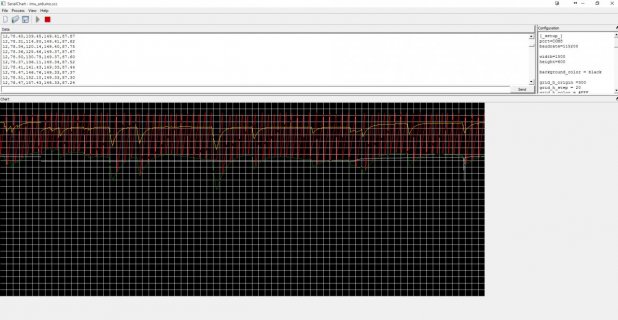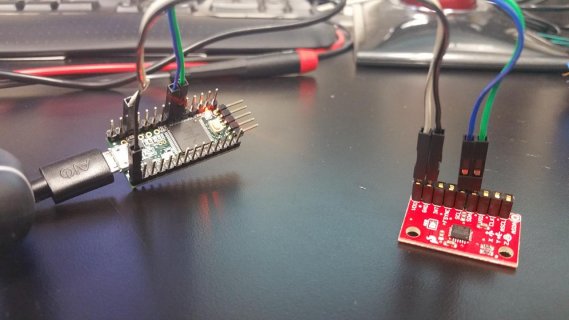Hey Guys,
I've got an MPU6050 wired to an Teensy 3.2. Its being powered via the Teeny's 3.3 bus and its ground (not AGND). SDA is connected to pin 18 and SCL is on pin 19. The initial connection works and all seems well until you look at the data. Take a look at the picture.
The red line is the Accel's X axis data. It cycles from 70 to 180 then wraps back around at a constant time period. Its a behavior I've never seen. This same code works great on a 2560 Mega. I was wonder if there are any common problems when transfering I2C code from Arduino to Teensy that I may be missing. This is my first Teensy project.
Here is the code -
https://dl.dropboxusercontent.com/u/20568745/Kalman.h
https://dl.dropboxusercontent.com/u/20568745/Sensor_Only.ino
Sample Data -
https://dl.dropboxusercontent.com/u/20568745/sample data.txt
Attached a picture of the hardware set up -
I've got an MPU6050 wired to an Teensy 3.2. Its being powered via the Teeny's 3.3 bus and its ground (not AGND). SDA is connected to pin 18 and SCL is on pin 19. The initial connection works and all seems well until you look at the data. Take a look at the picture.

The red line is the Accel's X axis data. It cycles from 70 to 180 then wraps back around at a constant time period. Its a behavior I've never seen. This same code works great on a 2560 Mega. I was wonder if there are any common problems when transfering I2C code from Arduino to Teensy that I may be missing. This is my first Teensy project.
Here is the code -
https://dl.dropboxusercontent.com/u/20568745/Kalman.h
https://dl.dropboxusercontent.com/u/20568745/Sensor_Only.ino
Sample Data -
https://dl.dropboxusercontent.com/u/20568745/sample data.txt
Attached a picture of the hardware set up -


